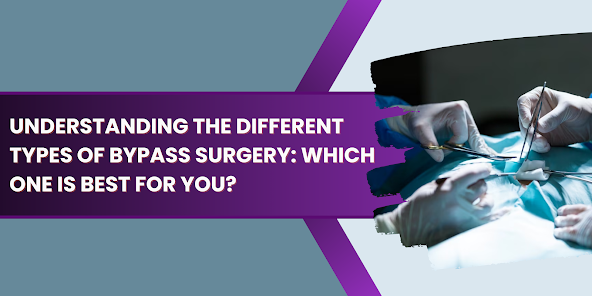Understanding the Different Types of Bypass Surgery: Which One is Best for You?
Bypass surgery, also known as coronary artery bypass graft (CABG) surgery, is a common procedure used to treat coronary artery disease (CAD). CAD occurs when the blood vessels that supply the heart with oxygen-rich blood become narrowed or blocked due to the buildup of plaque. Bypass surgery involves creating new pathways for blood to flow around the blocked or narrowed arteries, improving blood flow to the heart muscle. There are several types of bypass surgery:
1. Traditional Coronary Artery Bypass Grafting (CABG):
This is the most common type of bypass surgery. It involves using a healthy blood vessel, often taken from the leg or chest, to create a new pathway for blood to bypass the blocked or narrowed coronary arteries. The graft vessel is attached above and below the blocked area, allowing blood to flow around the blockage.
2. Off-Pump Coronary Artery Bypass (OPCAB):
In this approach, the heart is stabilized using special devices while the surgery is performed without the need for a heart-lung machine. This technique is used to avoid some of the potential complications associated with using a heart-lung machine, such as bleeding and kidney problems.
3. Minimally Invasive Direct Coronary Artery Bypass (MIDCAB):
This procedure is performed through a small incision made between the ribs. It's usually used for single-vessel disease and involves grafting the left internal mammary artery directly onto the left anterior descending artery.
4. Robot-Assisted Coronary Artery Bypass (RACAB):
Robot-assisted surgery involves using robotic arms controlled by the surgeon to perform the bypass grafting. This can potentially offer greater precision and dexterity in tight spaces compared to traditional methods.
5. Hybrid Coronary Revascularization:
This approach combines both surgical and interventional procedures. It involves performing bypass surgery on one or more vessels along with placing stents in other narrowed vessels during the same procedure.
6. Endoscopic Vein Harvesting:+
This technique is used to harvest veins from the patient's own body (usually from the legs) for use as grafts during CABG surgery. It involves using an endoscope to visualize and harvest the vein through small incisions.
It's important to have a thorough discussion with your healthcare provider and a cardiovascular surgeon to determine the most suitable approach for your individual situation. Here are a few factors to consider:
1. Number and Location of Blockages: The type and number of blocked or narrowed arteries play a significant role in determining the appropriate surgical approach. Some techniques are better suited for single-vessel disease, while others are more suitable for multi-vessel disease.
2. Overall Health: Your general health and any other medical conditions you have can influence the choice of surgery. If you have additional health concerns, such as kidney problems or lung disease, your surgeon may recommend a technique that minimizes the impact on these conditions.
3. Risk Factors: The presence of other risk factors, such as diabetes, obesity, and advanced age, can impact the choice of surgery. Some techniques may be more suitable for patients with certain risk factors.
4. Surgical Expertise: The skill and experience of the surgeon are critical factors in the success of the procedure. Different surgeons may have varying levels of experience with different techniques. You should choose a surgeon who is experienced in the specific technique being considered.
5. Patient Preference: Your personal preferences and comfort level with different surgical approaches should also be taken into account. Some patients may prefer less invasive options, while others may prioritize the most effective treatment regardless of invasiveness.
6. Recovery Time: The expected recovery time and rehabilitation process can differ based on the surgical technique. Some minimally invasive approaches may lead to quicker recovery, while traditional CABG surgery might require a longer hospital stay and rehabilitation period.
7. Long-Term Outcomes: Research the long-term outcomes and success rates associated with different techniques. Your surgeon can provide you with information about the expected results and potential complications.
8. Discussion with Medical Team: Engage in open and thorough discussions with your healthcare team, including your cardiologist and surgeon. They can provide insights into the pros and cons of each technique as they relate to your specific condition.
Ultimately, the decision on which bypass surgery technique is best for you should be made in collaboration with your Bypass Surgeon in Coimbatore. They will consider your medical history, diagnostic tests, and individual needs to recommend the most appropriate approach to address your coronary artery disease and improve your heart health.




Comments
Post a Comment